Samyang 12 mm f/2.0 NCS CS
3. Build quality
In the photo below we put three ultra wide-angle lenses produced by Samyang side by side. Two of them are designed for the APS-C DSLR cameras (the 3.5/8 fish eye and the rectilinear 2.8/10) and the third is the 2/12, tested by us here.
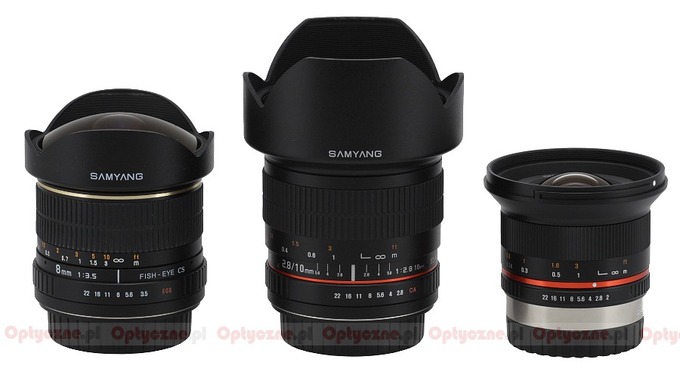 |
Please Support UsIf you enjoy our reviews and articles, and you want us to continue our work please, support our website by donating through PayPal. The funds are going to be used for paying our editorial team, renting servers, and equipping our testing studio; only that way we will be able to continue providing you interesting content for free. |
- - - - - - - - - - - - - - - - - - - - - - - - - - - - - - - - - - - - - - - - - - - - - - - -
The Samyang 12 mm f/2.0 NCS CS starts with a metal mount. Unfortunately the lens doesn’t feature any contacts so it can’t communicate with a body and controlling the aperture from the camera level is impossible. A rear element, 19 mm in diameter, changes its position during focusing but that movement is slight. The area next to the rear element is properly darkened, you can’t see any significant gaps or slits so you can’t peek into the inner tube.
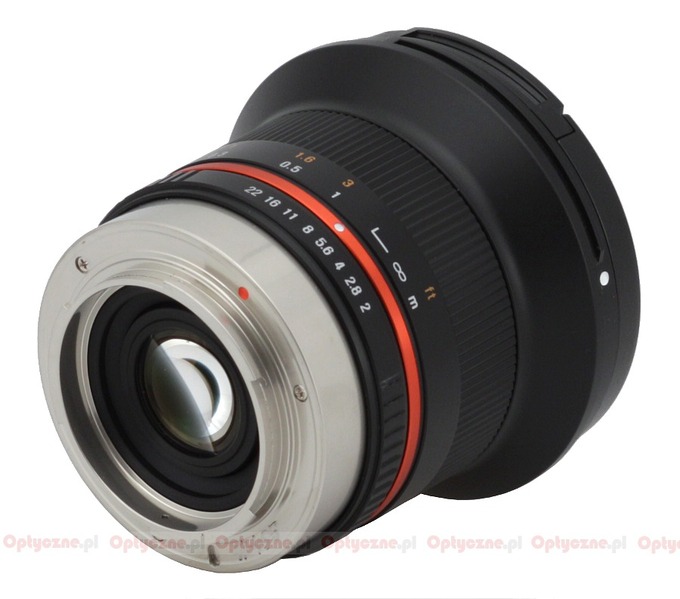 |
The first element of the proper body is a non-rotating, metal, silvery ring. Then you see an aperture ring, 8 mm wide – it moves smoothly and is well-damped, allowing you to change aperture values every 1/2 EV step.
Then you see a red, metal stripe which can’t be moved either. Behind it there is a manual focus ring, 23 mm wide, with a distance scale expressed in meters and feet. It moves smoothly and with proper resistance – running through the whole scale takes a turn through about 130 degrees. Unfortunately the producer didn’t add any depth of field scale on the casing. I admit in a case of a manual lens that decision is very strange indeed…
 |
Behind the manual focus ring the body of the lens widens quickly and it ends with a hood mount which surrounds a non-rotating filter thread, 67 mm in diameter. Inside it you can find a part of the casing with the name and the parameters of the lens. The front element is immobile, convex, with a diameter of 34 mm.
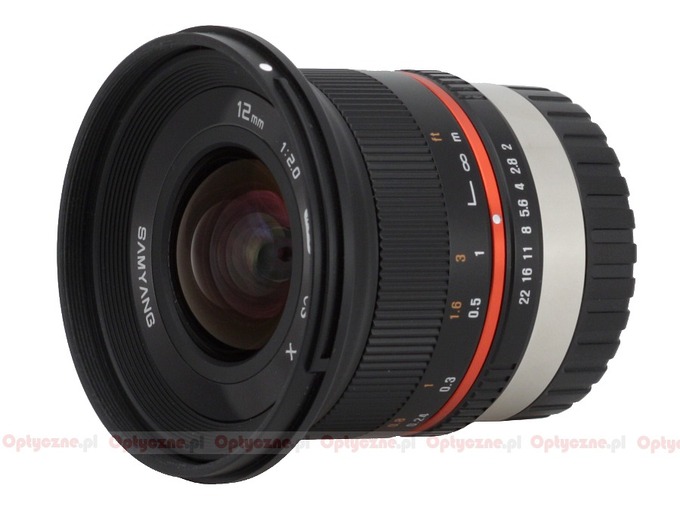 |
When it comes to the inner construction of the lens consists of 12 elements positioned in 10 groups (including two aspherical elements and 3 elements made of low dispersion ED glass). Two front elements of the lens are covered by nano crystal anti-reflective coatings which are supposed to ensure a better performance against bright light. Inside you can also find an aperture with six diaphragm blades which can be closed down to f/22.
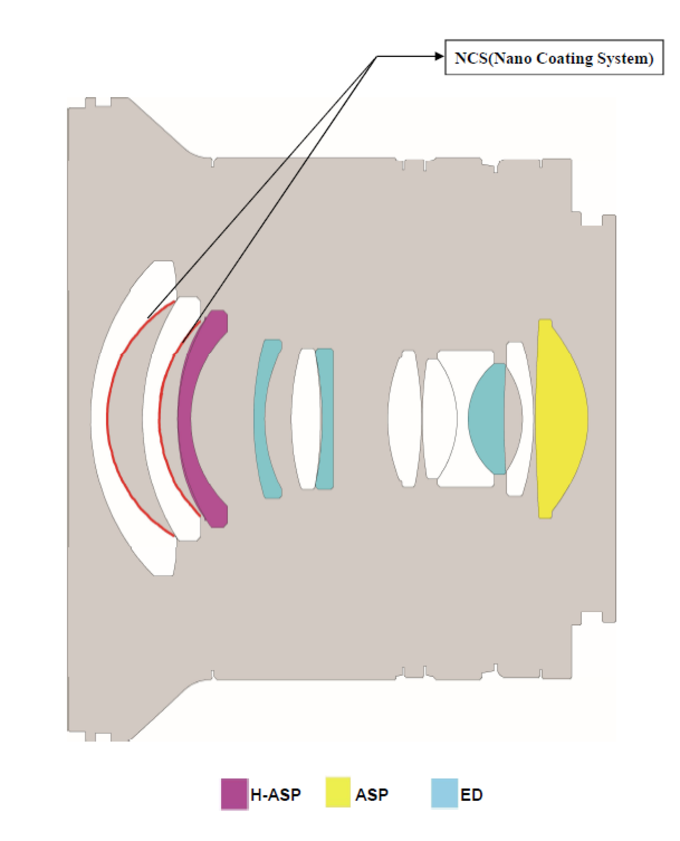 |
The buyers gets both caps, a petal-type hood and a soft pouch in the box. Overall we enjoyed the build quality of the Samyang 2/12 very much. It seems that the Samyang lenses designed for mirrorless cameras are produced in a different factory than those designed for reflex cameras - they look better, are more solid, more predictable and they come without so many mechanical failures as their bigger brothers.
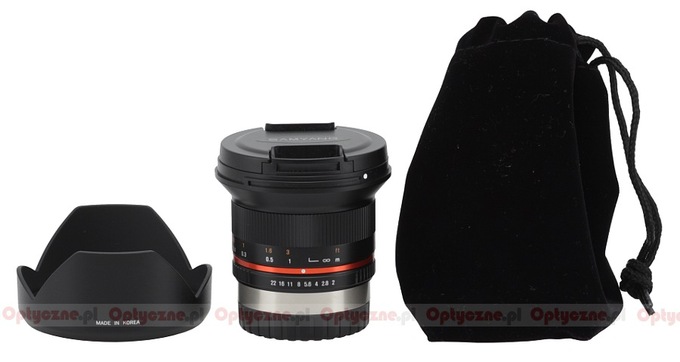 |






